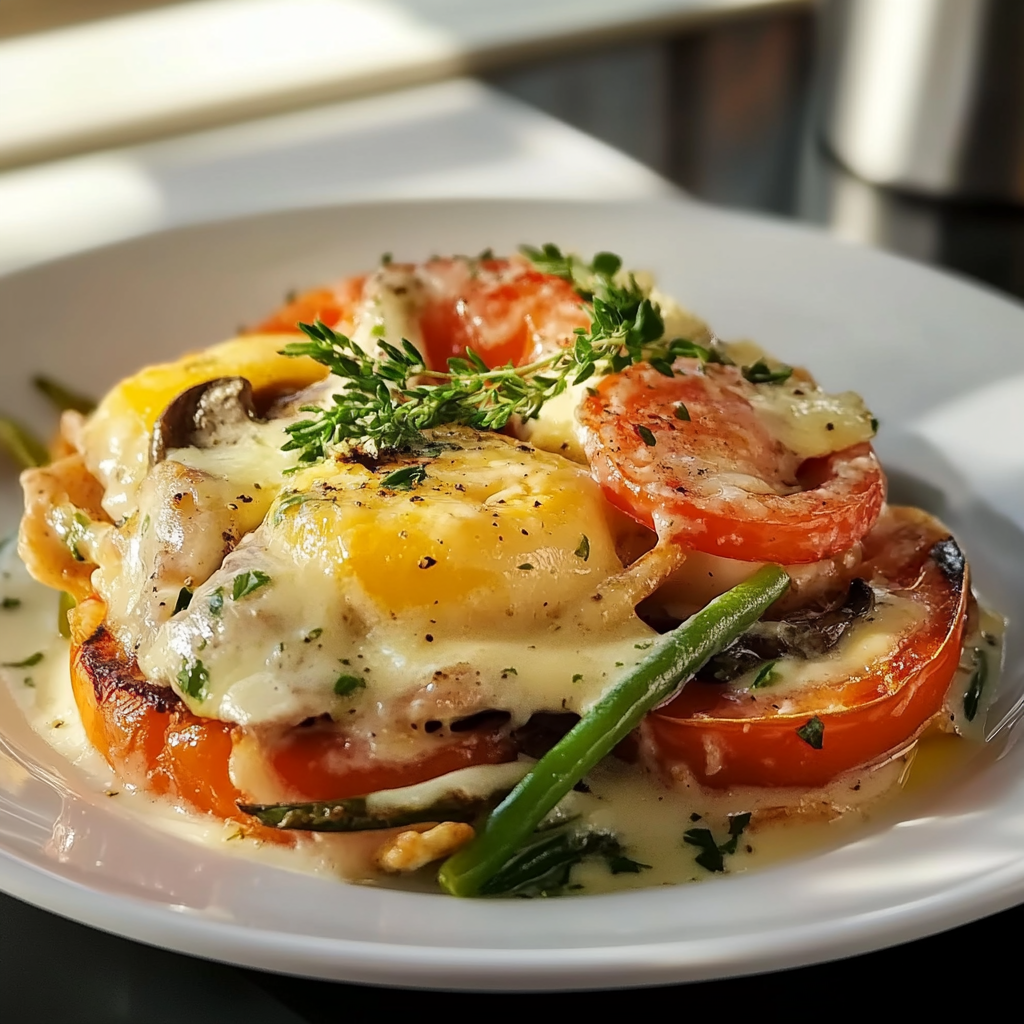Quick Overview
Are you searching for more inspiration in your kitchen? Cooking can become repetitive if you stick to the same old recipes. Embracing new ideas not only brings excitement but also enhances your culinary skills. In this article, we provide a collection of easy and delicious recipes that will spark your creativity. Whether you are a novice or an experienced cook, these dishes are simple enough to prepare but impressive enough to satisfy any palate. From vibrant salads to hearty mains, there’s something here for everyone. Let’s dive into these delightful recipes that promise to bring joy back into your cooking routine. Each recipe is designed to encourage experimentation while keeping the process enjoyable and stress-free. So roll up your sleeves and get ready to discover more inspiration that will transform your meals!
Ingredient Breakdown
Fresh Vegetables
Using fresh vegetables is essential for flavor and nutrition. Choose seasonal produce whenever possible for the best taste.
Lean Proteins
Incorporating lean proteins like chicken or fish keeps meals healthy while ensuring they are filling.
Whole Grains
Whole grains such as quinoa or brown rice add fiber and richness to dishes. They are perfect bases for many meals.
Herbs and Spices
Fresh herbs and spices elevate any dish by adding layers of flavor. Experiment with different combinations to find what you love best.
Healthy Fats
Using healthy fats like olive oil or avocado can enhance flavors while providing essential nutrients.
Broths and Stocks
Adding quality broths or stocks can deepen the flavor profiles of soups or sauces significantly.
Dairy Alternatives
For those who prefer plant-based options, dairy alternatives like almond milk or coconut yogurt offer great texture without compromising taste.
Step By Step Recipe: More Inspiration
1. **Prepare the Ingredients**: Start by washing all vegetables thoroughly. Chop them into bite-sized pieces, ensuring they cook evenly. Measure out all other ingredients according to the list provided earlier.
2. **Cook the Grains**: In a saucepan, bring water or broth to a boil. Add your chosen whole grains, reduce heat, and let simmer until cooked through—this usually takes about 20 minutes for quinoa or brown rice.
3. **Sauté Vegetables**: In a large skillet over medium heat, add olive oil and allow it to warm up slightly before adding in chopped vegetables. Sauté until they soften and begin caramelizing; this should take around 5-7 minutes.
4. **Add Proteins**: Push the sautéed vegetables aside in the skillet and add lean protein such as diced chicken or fish fillets. Cook until browned on all sides and fully cooked through—typically about 10 minutes depending on thickness.
5. **Combine with Grains**: Once both proteins and veggies are ready, mix them with the cooked grains in a large bowl. Stir thoroughly so that everything is well combined.
6. **Season Generously**: Sprinkle fresh herbs along with salt and pepper over the mixture for added flavor depth—toss again to distribute evenly throughout the dish.
7. **Serve Warm**: Plate up your delicious creation while warm! Garnish with additional herbs if desired and enjoy immediately for maximum freshness!

Serving and Storing Tips
H4 Serving Suggestions
When serving your dish, consider adding an extra layer of flavor with toppings such as freshly squeezed lemon juice or a sprinkle of cheese if desired. Pair your meal with a light salad for balance; this adds both color and texture while enhancing overall enjoyment during mealtime.
H4 Storage Guidelines
To store leftovers effectively, allow them to cool completely before transferring them into airtight containers. This prevents moisture buildup which could lead to spoilage—these can be kept refrigerated for up to three days or frozen for longer storage options if needed!
By following these guidelines along with our tasty recipes filled with more inspiration, you’ll find yourself creating meals everyone will love! Happy cooking!
Mistakes to avoid
One common mistake people make is not prepping ingredients beforehand. Failing to have all your ingredients ready can lead to confusion and mistakes during cooking. Measure out spices, chop vegetables, and gather all tools before you start. This preparation ensures a smooth cooking process and minimizes stress.
Another frequent error is overlooking cooking times for various ingredients. Some items cook faster than others, so it’s crucial to add them at the right moments. For instance, if you’re making a stir-fry, add quick-cooking vegetables towards the end. This tip helps maintain texture and flavor in your dishes.
Many cooks also forget to taste their food as they prepare it. Not sampling your dish can result in an unbalanced flavor profile. Make it a habit to taste as you go along; this allows for adjustments in seasoning and ensures that your final dish is delicious.
Using the wrong pan for the recipe can be another pitfall. The type of cookware affects heat distribution and cooking time. For instance, using a non-stick pan for high-heat searing may not yield the best results. Be mindful of your equipment choices to achieve optimal outcomes.
Lastly, neglecting food safety practices is a serious mistake. Always wash your hands before handling food and ensure that surfaces are clean. Additionally, store leftovers properly within two hours of cooking to prevent bacterial growth. Following these safety measures will keep your kitchen healthy and enjoyable.

Tips and tricks
One effective tip is to read through the entire recipe before starting. Understanding each step will help you avoid surprises during cooking. It also allows you to gather all necessary ingredients and tools ahead of time, making the process smoother.
Another helpful trick is to use fresh herbs for added flavor. Fresh herbs can elevate even simple dishes into something special. Consider adding basil, parsley, or cilantro just before serving for a burst of freshness that enhances the overall taste.
Consider meal prepping as an efficient way to save time during busy weeks. Preparing meals in advance not only reduces daily cooking time but also helps with portion control and healthier eating choices. Dedicate a few hours each week to prepare staples like grains, proteins, or roasted vegetables.
Don’t underestimate the power of seasoning at different stages of cooking! Seasoning throughout can develop deeper flavors rather than just sprinkling salt at the end. Try adding spices early on when sautéing or browning ingredients for maximum impact.
Lastly, always invest in quality kitchen tools and utensils. Good knives make chopping easier and safer while sturdy pots and pans distribute heat evenly. Quality tools improve efficiency in the kitchen, giving you better results every time.
Suggestions for More Inspiration
If you’re looking for more inspiration in the kitchen, consider exploring global cuisines beyond your usual favorites. Trying dishes from different cultures can introduce new flavors and techniques that spark creativity in your own cooking. Research recipes from various regions—like Thai curries or Italian pastas—to broaden your palate.
Another suggestion is to follow food bloggers or chefs on social media platforms. Many share quick tips, innovative recipes, and exciting ideas regularly. Engaging with their content can motivate you to try something new or adapt existing recipes with creative twists.
Incorporating seasonal ingredients into your meals is another excellent source of inspiration. Seasonal produce often tastes better due to peak freshness and encourages variety in your diet. Visit local farmers’ markets or grocery stores for ideas on what fruits or vegetables are currently available.
Experimenting with different cooking methods can also inspire creativity in your kitchen routine. If you usually roast vegetables, try grilling them instead for a smoky flavor profile or steaming them for a lighter option. Variety in technique can lead to delightful discoveries.
Finally, consider joining a local cooking class or workshop where you can learn hands-on skills from professionals while meeting fellow food enthusiasts. These experiences often provide insights that ignite passion for culinary arts and encourage trying new recipes at home.

FAQs
What are some beginner-friendly recipes I can try?
If you’re starting out in the kitchen, look for simple recipes like scrambled eggs or stir-fried vegetables with rice. These dishes require minimal ingredients yet allow room for personalization based on preferences or available veggies.
How can I improve my knife skills?
Improving knife skills comes down to practice! Start by learning basic techniques such as chopping onions or dicing tomatoes correctly; watch instructional videos online if needed for guidance on proper grip and technique.
What should I do if my dish turns out too salty?
If you’ve accidentally made a dish too salty, adding an acid like lemon juice or vinegar may help balance flavors without overpowering the dish’s essence; alternatively, adding more unsalted ingredients can dilute excess saltiness effectively.
How do I choose the right cookware?
Choosing cookware depends on what you’ll be preparing most often; opt for versatile pieces like stainless steel skillets or cast iron pans that work well across various heat sources while providing durability over time in quality materials.
What’s an easy way to keep track of my meal prep?
Creating a weekly meal plan is an effective method! Write down what you’ll cook each day alongside shopping lists—this approach streamlines grocery trips while ensuring organized preparation sessions throughout busy weeks ahead!
Can I freeze leftovers safely?
Yes! Most cooked meals freeze well when stored properly; use airtight containers labeled with dates before placing them into freezer compartments—this practice helps maintain freshness while preventing freezer burn over extended periods!
Summary
In conclusion, avoiding common mistakes along with implementing useful tips will enhance your culinary experiences significantly. Embrace suggestions like exploring diverse cuisines or engaging with fellow food lovers online as sources of inspiration that fuel creativity in meal preparation! Remember these key points: prep ahead of time, prioritize seasoning throughout cooking stages, and experiment with various techniques regularly!

